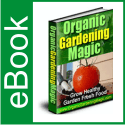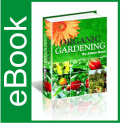Container Vegetable Gardening
Container Vegetable Gardening
Article by Mark Bartley
Cultivating vegetables at home in containers has become increasingly popular over the past few years, especially with home gardeners who may limited by the amount of ground available and not have the space for a vegetable plot. It is also an ideal way for the elderly or infirm to carry on gardening without having to worry about getting down to ground level. It’s also a great way to introduce children to the joys of learning how to grow vegetables.
So which types of containers can be used? Garden centres and retail stores stock various options, but many people make do with recycling things they already have. Before you head off for the garden centre and buy troughs, pots and gro-bags, consider what kind of vegetables you want to put in them. Some plants like carrots will need plenty of soil depth, as will parsnips so choose your container wisely. Alternatively, surface vegetables such as courgettes or marrows tend to spread more and take up more area but less depth. So before you buy your containers, plan exactly what you want to grow and purchase containers that will accommodate the plants easily.
The pros of container growing are various. Learning how to grow vegetables in containers is a great introduction to gardening, particularly for children and those new to growing their own. Containers are easy to access, weeds will not spread and no heavy digging to do and if you use shop-bought soil and compost, you can be sure that the pH and soil quality are consistent. You will also avoid any pest problems, as the soil will have been sterilised before being bagged. If you are growing tender vegetables, using containers also means that you’ll be able to position the plants in the best position as they develop and grow. It also lets you move them into more sheltered areas if a sudden sharp frost is predicted or the weather turns chilly. If you choose carefully, vegetables in containers can also make interesting ‘statement’ plants. Hanging baskets filled with cherry tomato plants make a change from Million Bells flowers, and terracotta pots planted with purple sprouting broccoli will add a dash of colour to the porch or patio when few other flowers are out.
There are however some disadvantages to container growing. These are a few of the drawbacks to growing vegetables in containers. You will be severely limited as to how much you can grow, so don’t choose vegetables that take up too much space or need a larger growing area such as cabbages or cauliflowers. The size of the crop you can grow will be much less than if you planted a row in a vegetable plot, so choose vegetables that produce repeated crops to make the most of your containers. The other big disadvantage of learning how to grow vegetables in containers is that accurate watering and feeding is much more important than a garden plot. Containers can become dry very quickly, especially in sunshine and food resoures will be quickly used up by thriving plants, so you will need to either set up an automatic watering system that can be adjusted to compensate for very hot, dry weather or be prepared to water your containers every day yourself. Using containers allows anyone, regardless of garden size, to explore how to grow vegetables for themselves. It’s easy, there is less manual effort involved and containers full of healthy vegetables on the patio can be something to be proud of a real garden feature.
About the Author
Mark provides guidance for anyone interested in growing vegetables in their gardens. Mark has produced a rich selection of home and garden reports providing useful reference material.

 December 26, 2011
December 26, 2011 







